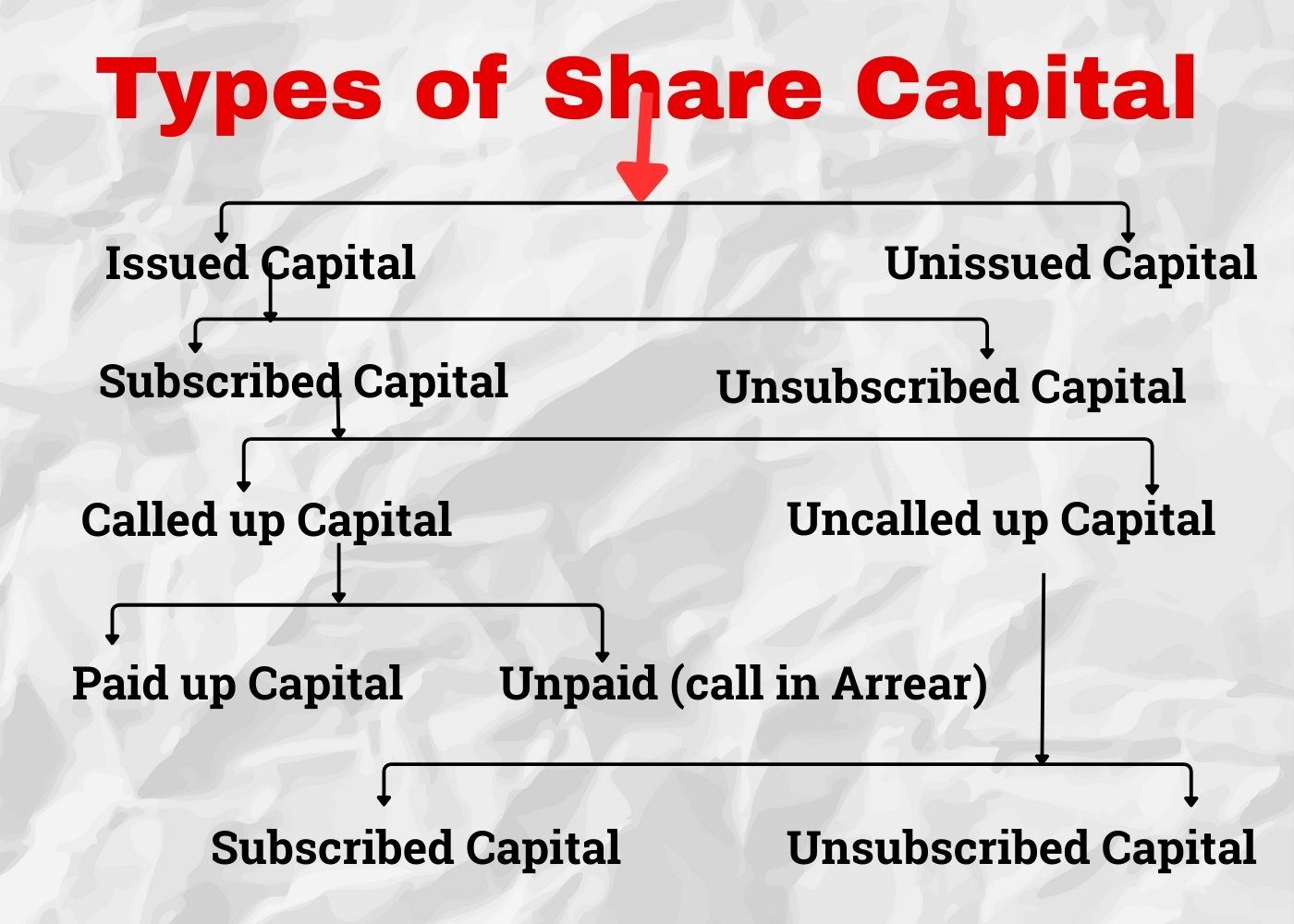Types of Share Capital
Unique Leaning Academy
09/09/2025
Accountancy XII
Class 12,
Accounting for Share Capital

Share Capital
Meaning:
Share Capital is the amount of money a company raises by issuing shares to the public (shareholders). It represents the ownership money invested in the company by shareholders.
Share Capital = Funds raised by the company through shares (ownership money, not borrowed money like loans).
Explanation:
- A company divides its total capital into small units called shares.
- Each share has a face value (example: ₹10).
- When people (investors) buy these shares, they become shareholders and contribute to the company’s capital.
- This collected money is called Share Capital.
Example:
- Suppose a company issues 1,00,000 shares of ₹10 each.
- If all shares are bought by the public:
1,00,000 × ₹10 = ₹10,00,000 (This is the Share Capital).
So, the company now has ₹10 lakh as Share Capital, contributed by shareholders.
Types of Share Capital
Figuring out share capital can feel like learning a new language. But it’s really just about tracking a company’s money at different stages. Let’s break it down from the top.
1. Authorised (or Nominal) Capital
Think of this as the company’s spending limit, set by its own rulebook. It’s the absolute maximum amount of money the company is legally permitted to raise by selling shares. They can’t issue shares beyond this cap without officially changing their documents.
- In simple terms:The total value of shares the company is allowed to create.
- Example:A company’s charter says it can create up to 100,000 shares, each with a face value of ₹10. That makes its authorised capital ₹1,000,000.
2. Issued Capital
The company doesn’t have to issue all its authorised shares at once. Issued capital is the chunk of that authorised limit they actually decide to offer to investors for purchase.
- In simple terms:The value of shares the company actually offers to sell.
- Example:From its authorised pool of 100,000 shares, the company decides to launch an offer for 60,000 shares at ₹10 each. So, it has issued capital of ₹600,000.
3. Unissued Capital
This is just the leftover portion. It represents the remaining shares from the authorised limit that the company is holding back for now. They can issue these later when they need to raise more funds.
- In simple terms:The value of shares the company has not yet offered to sell.
- Example:With ₹1,000,000 authorised and ₹600,000 issued, the unissued capital is the remaining ₹400,000 (or 40,000 shares).
4. Subscribed Capital
Sometimes the public snaps up all the issued shares, sometimes they don’t. Subscribed capital is the portion of the issued shares that investors have actually agreed to buy.
- In simple terms:The value of shares the public agrees to purchase.
- Example:The company issued 60,000 shares, but investors only applied for 55,000 of them. The subscribed capital is therefore 55,000 shares x ₹10 = ₹550,000.
5. Unsubscribed Capital
This is the awkward gap. It’s the part of the issued share offering that investors passed on and didn’t buy. It represents capital the company hoped to raise but couldn’t.
- In simple terms:The value of issued shares that nobody wanted to buy.
- Example:With ₹600,000 issued but only ₹5,50,000 subscribed, the unsubscribed capital is ₹50,000 (5,000 shares).
6. Called-up Capital
A company doesn’t always ask for the full share price upfront. They might just ask for a portion of it now and the rest later. The called-up amount is the part of the share’s value they are formally requesting from shareholders.
- In simple terms:The amount the company asks shareholders to pay right now.
- Example:On the subscribed 55,000 shares (₹10 each), the company might only “call” for ₹8 per share to be paid immediately. The called-up capital is 55,000 shares x ₹8 = ₹440,000.
7. Uncalled Capital
This is the flip side of called-up capital. It’s the portion of the money for subscribed shares that the company hasn’t asked for yet. It’s a promise of future payment that shareholders are liable for.
- In simple terms:The amount the company hasn’t yet asked shareholders to pay.
- Example:If the full share price is ₹10 and only ₹8 has been called, the uncalled capital is ₹2 per share. For 55,000 shares, that’s ₹1,10,000.
8. Paid-up Capital
This is the real money in the bank. It’s the actual cash shareholders have paid so far against the company’s calls. This is the money the company truly has to work with.
- In simple terms:The amount shareholders have actually paid.
- Example:The company called for ₹400,000. Most shareholders paid in full, but a few were late, so the company actually received ₹380,000. That ₹380,000 is the paid-up capital.
9. Unpaid Capital (Calls in Arrears)
This is the outstanding bill. It’s the amount that has been called by the company but hasn’t been paid by the shareholders by the due date. It’s essentially money owed to the company.
- In simple terms:The amount shareholders owe from a called payment.
- Example:From the ₹400,000 called, the total paid was only ₹380,000. The missing ₹20,000 is the unpaid capital or “calls in arrears.”
10. Reserve Capital
This is a special safety net. It’s a portion of the uncalled capital that the company formally decides it can only demand in a worst-case scenario—specifically if the company is being shut down (wound up). It cannot be called during normal business.
- In simple terms:Emergency funds that can only be called during liquidation.
- Example:To protect future creditors, the company might resolve that ₹50,000 of its uncalled capital becomes reserve capital, ring-fenced for winding up.
11. Unreserved Capital
This is the company’s “ready-to-go” funding pool. It refers to any part of the authorised capital that hasn’t been earmarked, reserved, or issued yet. It’s the shares still sitting on the shelf, fully available for the company to issue to the public whenever they need to.
- In simple terms:The shares still available for future issuance.
- Example:With ₹1,000,000 authorised and ₹600,000 issued, the unreserved capital is the remaining ₹400,000. This is the capital not tied down by any prior commitment.
Conclusion
Share Capital is the lifeline of a company’s finances, representing the money raised from shareholders in exchange for ownership. By dividing capital into different categories—like authorised, issued, subscribed, called-up, paid-up, and reserve—the company can track its funds at every stage of the journey, from the maximum allowed to the actual cash in hand.
Understanding these types helps us see:
- How much money a company can raise.
- How much it has offered.
- How much the public has invested.
- How much the company actually holds.
Recent Posts
Have Any Question?
Wish to enquire about our teaching pedagogy? Contact Us via Call or Email
- +91-9136-336-336
- contact@uniquelearning.in
